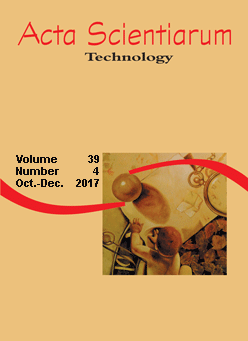<b>Fermented sausage production using <i>E. faecium</i> as starter culture: Physicochemical and microbiological profile, sensorial acceptance and cellular viability
DOI:
https://doi.org/10.4025/actascitechnol.v39i4.30882Keywords:
bacterial fermentation, ripening, acceptance, salami.Abstract
Â
Fermented sausages are defined as a mixture of lean meat and fat, curing salts, sucrose and spices, stuffed in a natural or artificial casing and submitted to fermentation and air-drying process. Starter culture and ripening process may affect the quality and acceptability of the final product. Current research evaluates the use of Enterococcus faecium as starter culture in fermented sausage production and its physicochemical and microbiological profile during maturation process, coupled to sausage sensory acceptance after ripening. Enterococcus faecium showed 10.9 log CFU g-1 and remained viable after the ripening period with 8.32 log CFU g-1. Fermented sausage was monitored during the ripening period by physicochemical (pH control, water activity and weight loss) and microbiological (analysis of coagulase-positive Staphylococcus, coliforms and Salmonella spp.) analyses. All tests complied with standards established by Brazilian legislation and did not interfere in final product quality. Results showed that E. faecium was resistant to curing salt and sodium chloride, maintaining its viability during ripening and conferring beneficial effects on fermented sausage technological characteristics. E. faecium also proved to be in vitro resistant to simulate passage through the human digestive tract. Fermented sausage containing E. faecium had better sensory acceptance than commercial sausage evaluated.
Â
Downloads
Downloads
Published
How to Cite
Issue
Section
License
DECLARATION OF ORIGINALITY AND COPYRIGHTS
I Declare that current article is original and has not been submitted for publication, in part or in whole, to any other national or international journal.
The copyrights belong exclusively to the authors. Published content is licensed under Creative Commons Attribution 4.0 (CC BY 4.0) guidelines, which allows sharing (copy and distribution of the material in any medium or format) and adaptation (remix, transform, and build upon the material) for any purpose, even commercially, under the terms of attribution.
Read this link for further information on how to use CC BY 4.0 properly.















8.png)




